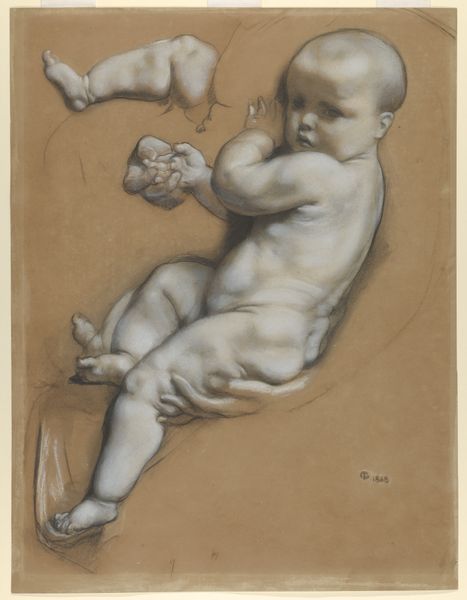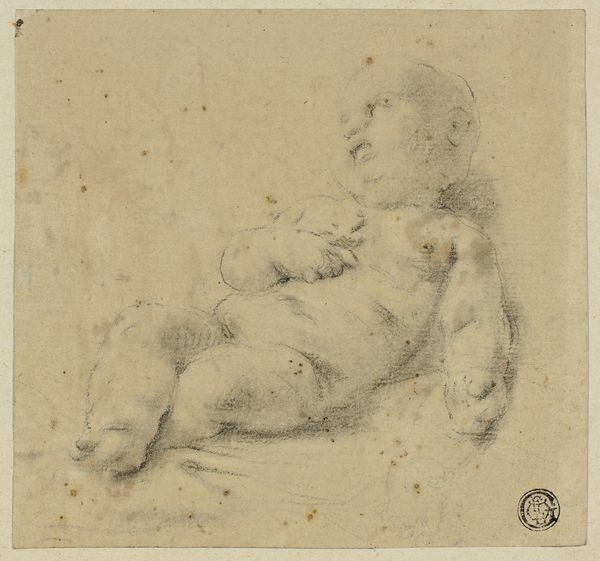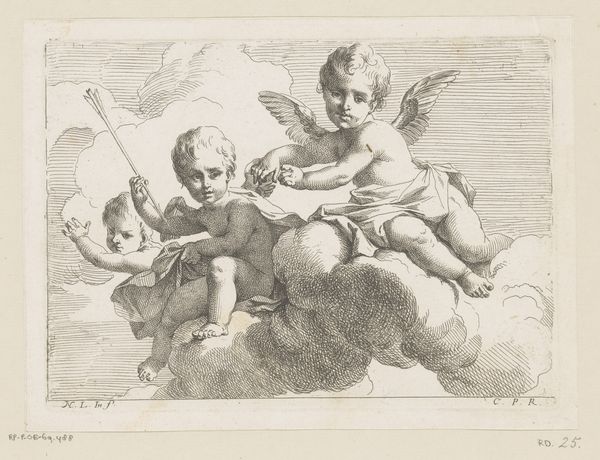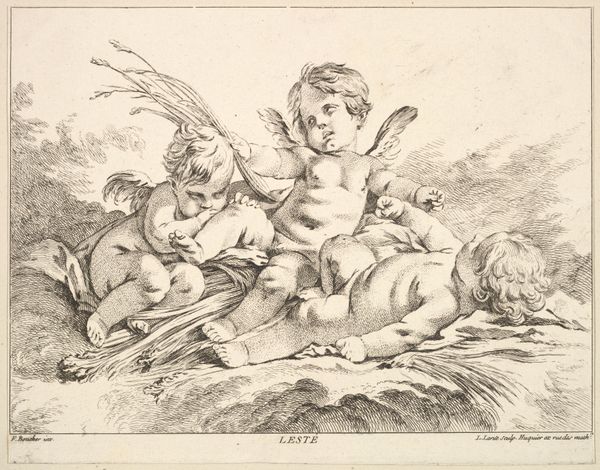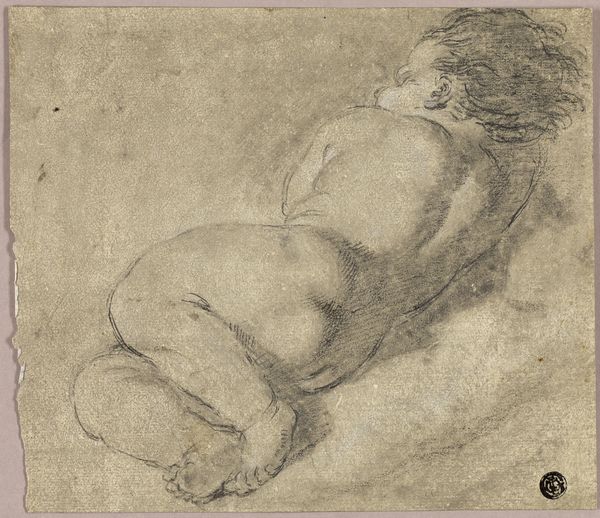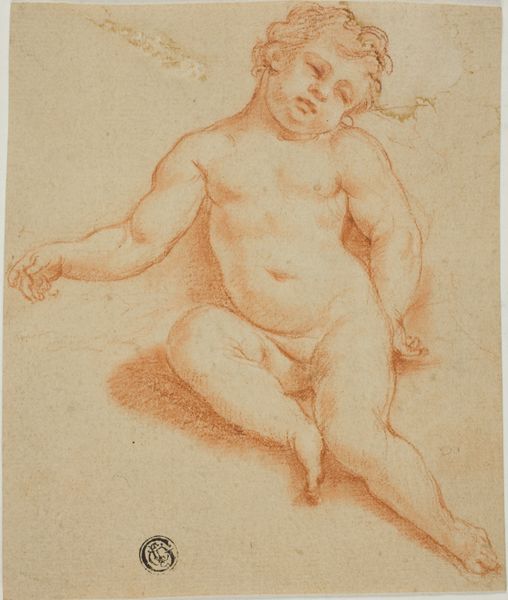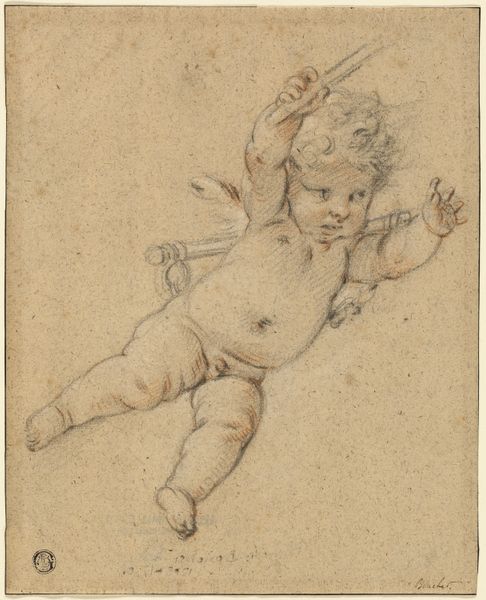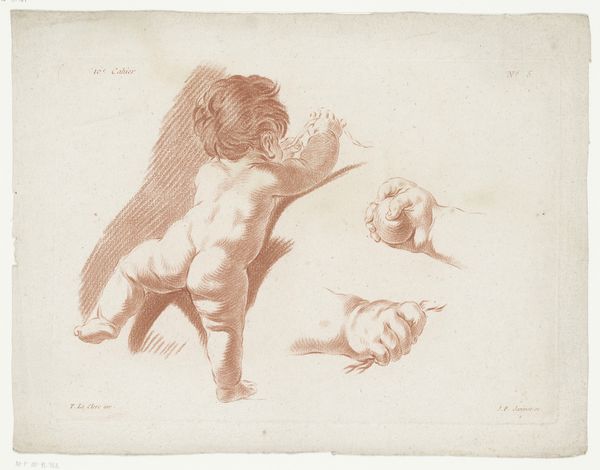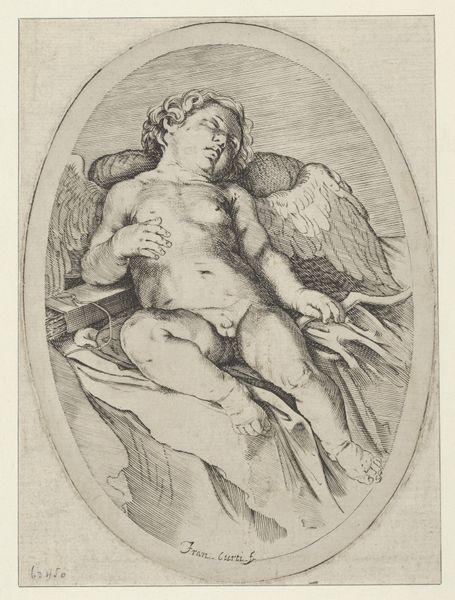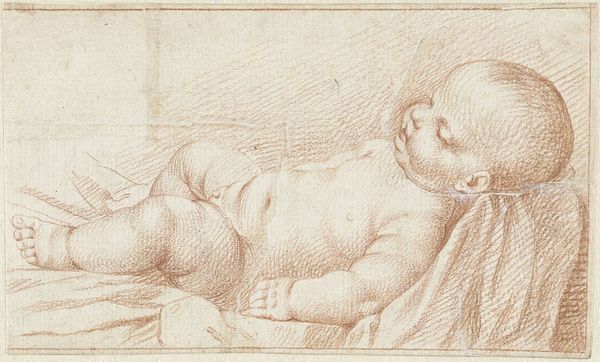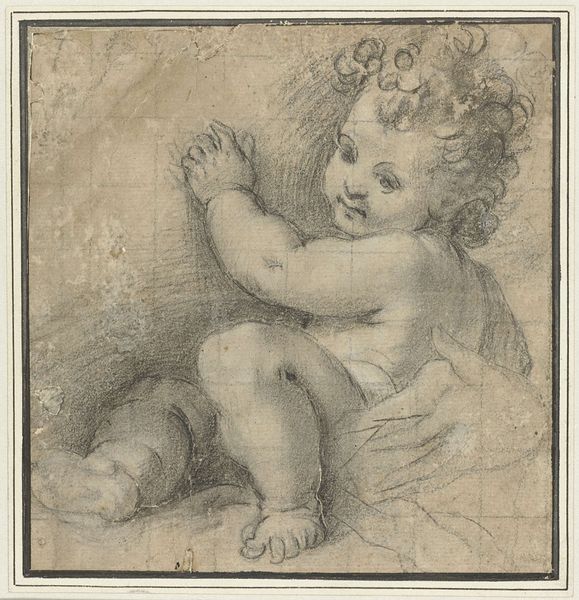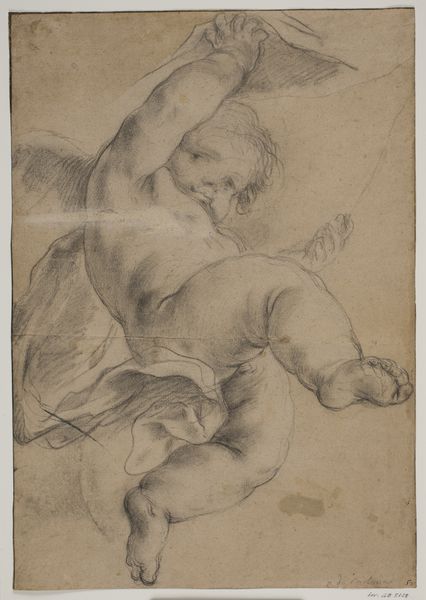
drawing, pencil
#
portrait
#
pencil drawn
#
drawing
#
neoclacissism
#
pencil sketch
#
child
#
pencil drawing
#
pencil
#
portrait drawing
Dimensions: height 214 mm, width 293 mm
Copyright: Rijks Museum: Open Domain
Curator: This delicate drawing is by Jean François Janinet, entitled "Toddler and head of a child," dating back to the 1770s, now held at the Rijksmuseum. It's rendered in pencil. Editor: It feels so classical, and serene. There's an incredible softness to the forms; it almost seems like the drawing itself is breathing. Curator: Neoclassicism, certainly, with its clear lines and focus on form. The choice to depict children invokes ideas about innocence. It taps into the cultural idealization of childhood that emerged during the Enlightenment. Editor: The use of simple lines emphasizes pure forms, consistent with Neoclassical aesthetics which valued restraint and clarity. Notice the fine hatching—the tonal range suggests three-dimensionality without strong contrasts, a conscious choice to evoke purity and softness. It makes you consider what these kinds of simple depictions would have signaled in the period. Curator: Right. Childhood was becoming seen as something precious, separate from adulthood, as Enlightenment ideas took hold, even if reality didn't always mirror this view. Janinet is participating in the creation of this idealized imagery. Babies symbolize potential and vulnerability. In earlier centuries, childhood was often considered a dangerous phase. But there's an almost aspirational quality about how childhood is rendered. Editor: This soft sanguine, too, enhances the sentiment of the subjects' vulnerability, imbuing them with life while rendering a somewhat clinical study. How the pencil marks render subtle folds and fleshy details suggests a semiotic dance between life and artifice, softness and structure. Curator: Indeed, that tension is palpable. On the one hand, Janinet has objectively created studies. On the other hand, he subtly presents a view that society would embrace around children and childhood generally. It foreshadows the way images of children would soon dominate visual culture and mass marketing! Editor: It really makes you appreciate the layering, then: how aesthetic, symbolic, and social histories intertwine. Curator: Precisely. Each artistic element bears witness to a transformation in how societies saw the potential in childhood, influencing even our modern associations with children.
Comments
No comments
Be the first to comment and join the conversation on the ultimate creative platform.
